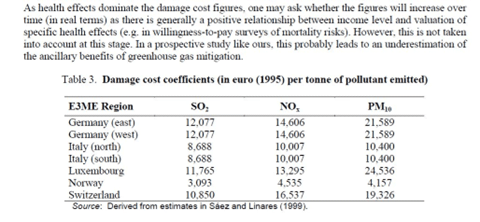NOx – FAQs
What is nitrogen oxide?
NOx is a generic term for the mono-nitrogen oxides NO and NO2 (nitric oxide and nitrogen dioxide). NOx should not be confused with nitrous oxide (N2O), which is a greenhouse gas and has many uses as an oxidizer, an anaesthetic and a food additive.
How are nitrogen oxides formed?
NOx is formed from the endothermic reaction of nitrogen and oxygen gases in the air during combustion, especially at high temperatures, during the combustion of oil, coal or gas.
What are the main sources of nitrogen oxide?
All combustion in air produces oxides of nitrogen. Key sources include non-road mobile sources (e.g. marine, railroads, diesel equipment) and on-road mobile sources (e.g. trucks, cars and motorcycles); power plants; cement and concrete installations; other industrial processes.
What are the environmental impacts of nitrogen oxides?
When NOx and volatile organic compounds (VOCs) react in the presence of sunlight, they form photochemical smog, a significant form of air pollution, especially in the summer. They are also involved in tropospheric production of ozone.
Nitrogen oxides form nitric acid when dissolved in atmospheric moisture, forming a component of acid rain. This contributes to the acidification of aquatic and terrestrial ecosystems. In addition, excess nitrogen inputs from the atmosphere promote increased growth of phytoplankton and other marine plants which, in turn, may cause more frequent harmful algal blooms and eutrophication (the creation of oxygen-depleted “dead zones”) in some parts of the ocean.
What are the health impacts of nitrogen oxide?
Short-term NOx exposures, ranging from 30 minutes to 24 hours are linked with adverse respiratory effects, including airway inflammation in healthy people and increased respiratory symptoms in people with asthma.
NOx reacts with ammonia and other compounds to form small particles. These can cause or worsen respiratory disease, such as emphysema and bronchitis, and can aggravate existing heart disease, leading to increased hospital admissions and premature death.
Children, the elderly, people with lung diseases such as asthma, and people who work or exercise outside are at risk for adverse effects from ozone, formed from NOx. These include reduction in lung function, increased respiratory symptoms and possibly premature deaths.
What is the social impact of NOx?
The economic costs of air pollution from fossil fuels are estimated at US$2.9 trillion in 2018, or 3.3% of global GDP
An estimated 4.5 million people died in 2018 due to exposure to air pollution from fossil fuels (confidence range 3.2 to 6.2 million). Some 3.0 million deaths are attributed to PM2.5 pollution, 990,000 to ozone pollution and 500,000 to NO2 pollution. On average, each death was associated with a loss of 19 years of life.
NO2 pollution from fossil fuels is linked to roughly 4 million new cases of asthma in children each year, with approximately 16 million children worldwide living with asthma as a result.

Figure 1: Centre for Research on Energy and Clean Air (CREA)

Figure 2: European Commission

